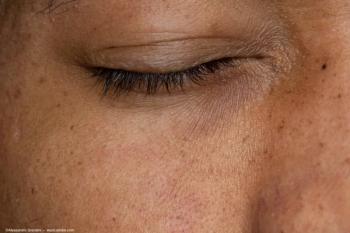
Drug delivery device effective in macular edema trial
Baltimore-A dexamethasone posterior segment drug delivery system (Posurdex, Allergan), developed by Oculex Pharmaceu- ticals, performed well in a phase II trial in patients with macular edema, with a 700-?g dose achieving statistically significant results when compared with an observation-only control group, according to Julia A. Haller, MD.
Baltimore-A dexamethasone posterior segment drug delivery system (Posurdex, Allergan), developed by Oculex Pharmaceu- ticals, performed well in a phase II trial in patients with macular edema, with a 700-µg dose achieving statistically significant results when compared with an observation-only control group, according to Julia A. Haller, MD.
"We found that the dexamethasone 700-µg bioerodible implant produced a statistically significant reduction in persistent macular edema in terms of best-corrected visual acuity (BCVA), contrast sensitivity, fluorescein angiographic leakage, and retinal thickness as measured by OCT. There was a clear dose-response relationship, no major safety concerns, and the treatment effect endured for at least 180 days," said Dr. Haller, Katharine Graham Professor of Ophthalmology, Wilmer Institute, Johns Hopkins University School of Medicine, Baltimore.
Allergan, which acquired Oculex in November, is finalizing plans for a phase III trial of the intravitreal drug delivery system containing micronized dexamethasone in a biodegradable copolymer of polylactic glycolic acid. In the proprietary platform, drugs are embedded and control-released, then biodegrade into water and carbon dioxide.
Animal study to test doses Dr. Haller also described a study of the steroid delivery system in animals that preceded the phase II study. Investigators tested doses of 350 µg and 700 µg in New Zealand white rabbits. They administered one drug product into the posterior segment of each rabbit's right eye and the left eyes served as controls.
"This study demonstrated that both dosages of Posurdex delivered drugs to the eye for approximately 35 days, with the mean concentration of dexamethasone observed being consistent with the dose administered," Dr. Haller said.
Next, investigators embarked on a randomized, prospective, multicenter, dose-ranging, controlled phase II clinical trial of the implant. Patients were randomly assigned to one of three treatment groups: a 350-µg dose, a 700-µg dose, or observation. Enrollment consisted of patients with macular edema associated with diabetic retinopathy, retinal vascular occlusive disease, Irvine-Gass syndrome, or uveitis that persisted for at least 90 days despite prior laser or medical treatment. Visual acuity ranged from 20/40 to 20/200.
The primary efficacy endpoint was an improvement in visual acuity of 2 lines or greater in the treatment group versus observation. Secondary endpoints were change in retinal thickness measured by optical coherence tomography (OCT), change in contrast sensitivity, and improvement in fluo- rescein angiographic leakage.
The study enrolled 306 patients, including 172 with diabetic macular edema, 103 with branch or central retinal vein occlusion, 27 with Irvine-Gass syndrome, and 14 with uveitic macular edema. The two treatment groups and the observation group were well matched for gender, race, and age as well as mean duration of their macular edema, Dr. Haller said.
"It is worth noting that the macular edema was indeed chronic, averaging between 1.65 and 2.03 years and up to 11 years in some cases," she added.
The primary endpoint of improvement in visual acuity was met at day 90. "We met our endpoint of a greater than or equal to 2-line gain with a statistically significant p value," Dr. Haller said. "The observation group (n = 105) improved in 19% of cases versus 26.1% in the 350-µg dose group (n = 100) and 36.7% in the 700-µg dose group (n = 101)."
The difference between the observation group and the higher-dose group was statistically significant (p = 0. 019).
Measures of edema correlated with significant decreases in both retinal thickness and fluorescein leakage (p < 0.001). Patients treated with the 350-µg dose also registered statistically significant decreases in retinal thickness (p = 0.015) and fluorescein leakage (p = 0 .002).
At day 180, an improvement in visual acuity 3 lines was found in 7.9% of the observation group compared with 13% and 19.4% in the escalating drug dosages, Dr. Haller said.
Newsletter
Don’t miss out—get Ophthalmology Times updates on the latest clinical advancements and expert interviews, straight to your inbox.


















































.png)


